#indigenous archaeology
Explore tagged Tumblr posts
Text
The findings match oral histories that elders in the area told researchers, said University of Saskatchewan professor Glenn Stuart, one of the researchers invited to work at the site last summer. Researchers believe people started living at the site shortly after glaciers receded about 10,000 years ago. "When you hear somebody talking about these huge floods that happened many, many years ago, then that makes us think that, OK, well, maybe there is a connection here because we could see from looking at this hearth that as soon as there was a stable landscape here, people were living there," Stuart said.
14 notes
·
View notes
Text
Cities believed to be 2000-3000 years old. (I LOVE LIDAR.)
Text below cut.
TL;DR:
Using the laser-scanning technology, researchers have uncovered a complex network of farmland, roads and neighbourhoods in Ecuador's Upano River Valley.
The cities are believed to be between 2,000 and 3,000 years old, according to Rostain, who works for France's National Center for Scientific Research. [Rostain's] group's findings were recently published in the journal Science.
Deep in the Amazon, researchers have uncovered a complex of ancient cities — using laser technology
The cities are believed to be between 2,000 and 3,000 years old
Mouhamad Rachini · CBC Radio · Posted: Jan 18, 2024 1:35 PM PST | Last Updated: January 18

Huge ancient city discovered in Amazon
"Wow" was all archaeologist Stéphen Rostain could say when LiDAR (light detection and ranging) laser technology revealed several ancient cities hidden deep in the Amazon rainforest.
"It's a gift for an archaeologist," he told The Current's Matt Galloway.
Using the laser-scanning technology, researchers have uncovered a complex network of farmland, roads and neighbourhoods in Ecuador's Upano River Valley.
The cities are believed to be between 2,000 and 3,000 years old, according to Rostain, who works for France's National Center for Scientific Research. His group's findings were recently published in the journal Science.
"In the Upano, it's a completely new approach [to] the human past in the biggest rainforest of the world," he said.
Indigenous archaeologist argues humans may have arrived here 130,000 years ago
New discoveries challenge our understanding of when the first people arrived in North America
LiDAR leads the way
Rostain has been working in the Upano River Valley for years. He says he started excavating there 25 years ago, so he's known about the site with earth mounds in the area for decades.
"What we didn't [know] at this time, it was the size and the global organization of this construction," he said. "This is really new, and the LiDAR showed to us a map of this road connecting cities."
LiDAR was introduced to the excavation in 2015, when Ecuador's National Institute for Cultural Heritage funded a LiDAR survey of the valley.
As part of the survey, specially equipped planes beamed laser pulses through the forest's vegetation, and measured their return path.
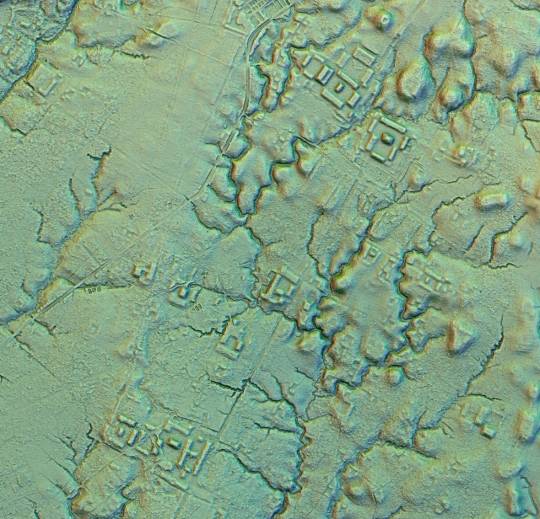
According to archaeologist Jay Silverstein, a senior lecturer at Nottingham Trent University in England, this method allows researchers to create a terrain model of the ground underneath the forest.
"You've basically skimmed off all the trees and you're actually looking at the shape of the earth," he told Galloway. "Then we start to be able to see the patterns of what we call anthropogenic, or things that were made by humans as opposed to nature."
For Rostain, this method is indispensable because it allows the exact shape and size of the ground to be reconstructed without harming the forest itself.
Rostain says nothing gets destroyed by LiDAR, noting that the technology maps out the terrain without cutting trees or destroying the archaeological site. "It's just perfect."
Silverstein said science can indeed be destructive, as damage created during excavation can't be undone. That's why using non-destructive archaeology like LiDAR is extremely important.
"We are developing more and more non-destructive techniques that allow us to to plan our excavations much better to understand what we're looking at and on the large scale before we do our small-scale excavations," he said.
Humankind's potential — and fragility
As significant as this discovery is, Silverstein warns against making any assumptions about this civilization based on first impressions.
"When I teach students or younger archaeologists, I tell them that your first impression, your gut instinct, your feeling of what you see when you first see, it is wrong," he said.
What's at stake for the climate, deep in the Amazon
The Amazon rainforest plays a crucial role in regulating the global climate, but it’s under serious threat from deforestation. CBC's international climate team ventures deep into the forest with scientists to learn how climate change is affecting it, and what’s at stake in the fight to save it.
In this case, Silverstein said assumptions shouldn't be made about what the geometric shapes revealed by LiDAR represent.
"You don't know if you're really talking about palace plazas or agricultural fields when you see a rectangular shape in the ground," he said. "There's a big difference of what it means when understanding that society."
Nevertheless, these findings are confirmation of humanity's potential, said Silverstein.
"Whether you're we're dealing with Highlanders in Papua New Guinea or villagers in Mexico … we adapt to our environments, we figure ways to organize ourselves," he said.
"And given the opportunity and the resources and good fortune, we will organize ourselves and create more complex societies and we'll figure out how to better manage our water and build roads and build houses."
How recreating ancient recipes helps one food buff bring the past to life
Lessons from an ancient Athenian in an era of 'fake news'
There may be a grim lesson to be learned from these findings, according to Silverstein: civilization is fragile, and there's no guarantee that our societies will be around in the future.
"Everyone who lived in those ancient societies thought their society was fine and that they were going to live on forever, and that their children would live there and their grandchildren and so on," he said. "But something happened and it didn't."
"We blithely go through life and we get our warnings of climate crisis and warfare and threats. But we more or less assume that we're going to be here tomorrow and living just like we do today —until it happens."
ABOUT THE AUTHOR
Mouhamad Rachini
Journalist
Mouhamad Rachini is a Canadian-Lebanese writer and producer for CBC Radio's digital team. He's worked for several CBC Radio shows including The Current, Day 6 and Cross Country Checkup. He's particularly passionate about stories from Muslim and Middle Eastern communities. He also writes about soccer on his website Between the Sticks. You can reach him at [email protected].
#archaeology#indigenous#ancient civilizations#amazon culture#indigenous archaeology#amazon archaeology#LIDAR
9 notes
·
View notes
Text
Canadian Indigenous peoples for the win!!!!
YALL
14K notes
·
View notes
Text
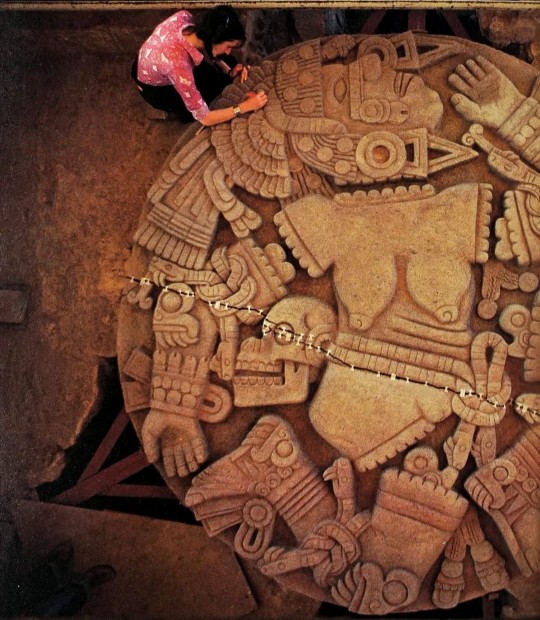
excavation of a stone disc depicting the Aztec moon goddess, Coyolxāuhqui (1978)
3K notes
·
View notes
Text


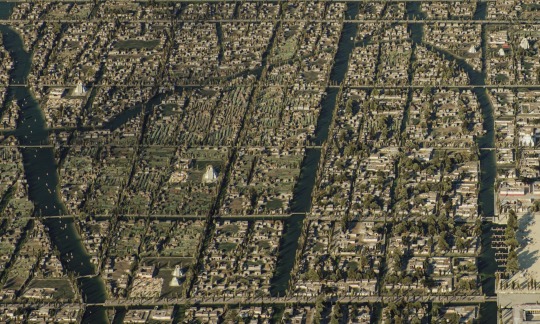
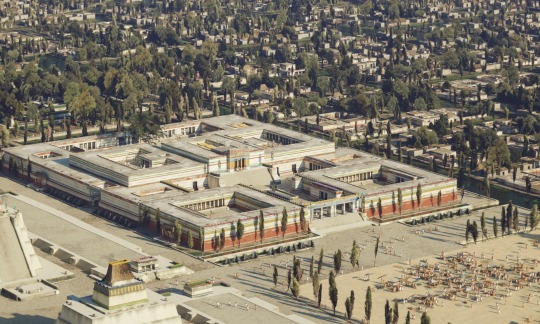

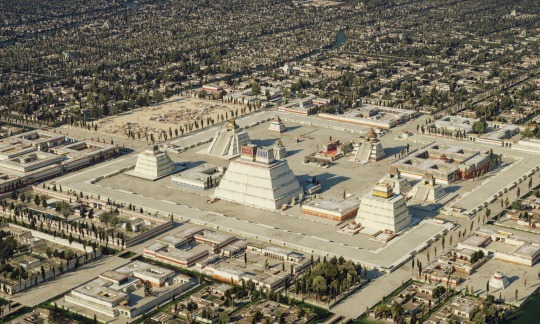
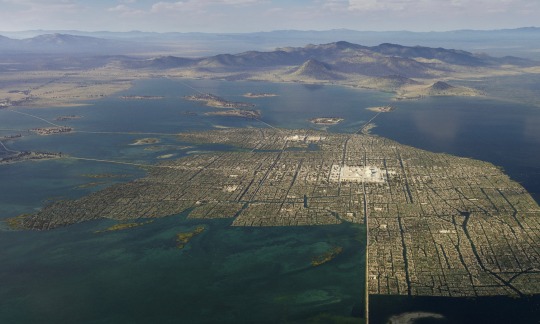
3D Reconstruction of Tenochtitlán by Thomas Kole
#history#art#mesoamerica#archaeology#antiquities#mexico#aztec#indigenous#indigenous history#precolumbian#precolumbian art#tenochtitlan#my posts
10K notes
·
View notes
Text
We often hear that Aboriginal peoples have been in Australia for 65,000 years, "the oldest living cultures in the world." But what does this mean, given all living peoples on Earth have an ancestry that goes back into the mists of time? Our new discoveries, published July 1 in the scientific journal Nature Human Behaviour, shed new light on this question. Under the guidance of GunaiKurnai Elders, archaeologists from the GunaiKurnai Land and Waters Aboriginal Corporation and Monash University excavated at Cloggs Cave near Buchan, in the foothills of the high country near the Snowy River in East Gippsland, Victoria.
Continue Reading.
697 notes
·
View notes
Text
500-year-old Snake Figure from Peru (Incan Empire), c. 1450-1532 CE: this fiber craft snake was made from cotton and camelid hair, and it has a total length of 86.4cm (about 34in)

This piece was crafted by shaping a cotton core into the basic form of a snake and then wrapping it in structural cords. Colorful threads were then used to create the surface pattern, producing a zig-zag design that covers most of the snake's body. Some of its facial features were also decorated with embroidery.

A double-braided rope is attached to the distal end of the snake's body, near the tip of its tail, and another rope is attached along the ventral side, where it forms a small loop just behind the snake's lower jaw. Similar features have been found in other serpentine figures from the same region/time period, suggesting that these objects may have been designed for a common purpose.

Very little is known about the original function and significance of these artifacts; they may have been created as decorative elements, costume elements, ceremonial props, toys, gifts, grave goods, or simply as pieces of artwork.
The Metropolitan Museum of Art argues that this figure might have been used as a prop during a particular Andean tradition:
In a ritual combat known as ayllar, snakes made of wool were used as projectiles. This effigy snake may have been worn around the neck—a powerful personal adornment of the paramount Inca and his allies—until it was needed as a weapon. The wearer would then grab the cord, swing the snake, and hurl it in the direction of the opponent. The heavy head would propel the figure forward. The simultaneous release of many would produce a scenario of “flying snakes” thrown at enemies.
The same custom is described in an account from a Spanish chronicler named Cristóbal de Albornoz, who referred to the tradition as "the game of the ayllus and the Amaru" ("El juego de los ayllus y el Amaru").
The image below depicts a very similar artifact from the same region/time period.

Why Indigenous Artifacts Should be Returned to Indigenous Communities.
Sources & More Info:
Metropolitan Museum of Art: Snake Ornament
Serpent Symbology: Representations of Snakes in Art
Journal de la Société des Américanistes: El Juego de los ayllus y el Amaru
Yale University Art Gallery: Votive Fiber Sculpture of an Anaconda
#artifacts#archaeology#inca#peru#anthropology#fiber crafts#americas#pre-columbian#andes#south america#art#snake#effigy#textiles#textile art#embroidery#history#stem stitch#serpent#amaru#mythology#andean lore#fiber art#incan empire#indigenous art#repatriation#middle ages#flying snakes tho
979 notes
·
View notes
Text
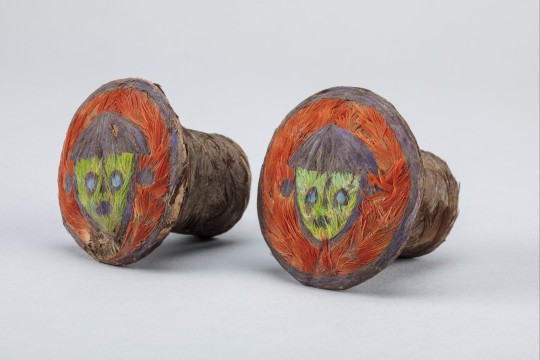
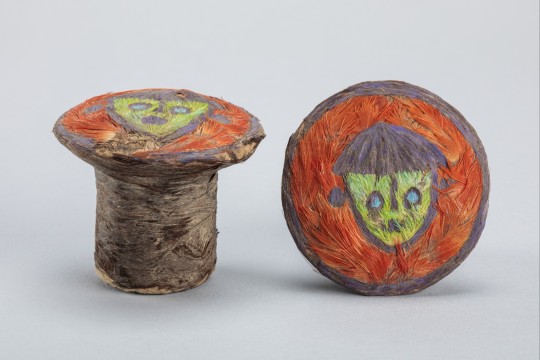
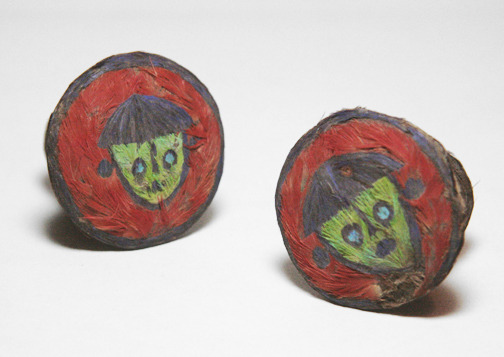
~ Pair of Ear Spools.
Date: A.D. 1000-1470
Place of origin: Central Coast, Perú
Culture: Chancay or Inca
Period: Late Intermediate-Late Horizon
Medium: Feathers, adhesive, gourd, and leather.
#history#museum#archeology#archaeology#pre columbian#12th century#15th century#peruvian#peru#south america#pair of ear spools#chancay#inca#indigenous#central coast#horizon period#intermediate period#feathers#a.d. 1000#a.d. 1470
630 notes
·
View notes
Note
Is there an archaeology thing you wish someone would ask you about because you wanna talk about it and if so would you be willing to talk about it? Here is a picture of my cat in trade but you can look at the picture even if you don’t talk about something
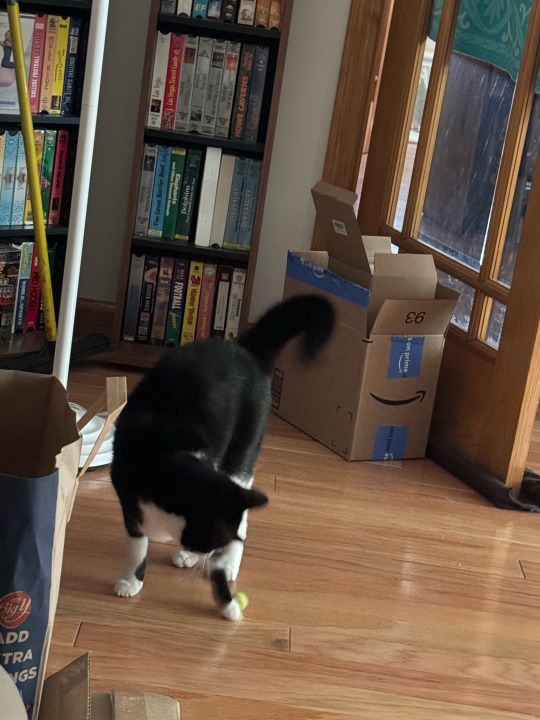
You know what, there IS, and it's all courtesy of @micewithknives!
I'm in charge of teaching my very own class this semester, which means I have full control over the course and I can do pretty much whatever I want. I was given a hand-me-down syllabus and overall I'm not changing much because this is my first time doing something like this and I don't want to get too into the weeds.
But the course is Ancient Civilizations, and we're getting at AUSTRALIA WEEK, babeyyy!!!
I've taken a version of this class and seen examples for a couple more, and I don't think I've ever encountered Australia in a context like this. Ancient Civ classes tend to focus on urban centers and monumental architecture, which is (partially) the result of Western bias for what counts as a "civilization" and means that a lot of cultures get left out.
With Mice's help, I've been learning about early Australian archaeology, and there is SO MUCH TO LEARN! Way too much to fit into a single week, but classes like this are really only capable of giving a very general overview. Anyway, here are some of the readings I'm having my students do:
Mice, I'll turn the stage over to you if you have anything you want to add.
-Reid
255 notes
·
View notes
Text
Skipping ALL things in my queue, and all the asks in my ask box, to tell y'all about THIS that came out a few hours ago. I cannot express how excited I am about this information finally being published.
Its not the first evidence of pottery technologies found in Australia, but the artefacts that have been found at the Lizard Island group in the past havent necessarily been datable. Evidence of pottery in the Torres Strait was also found in the early 2000s, and its been analysed to be evidence of trade with Papua New Guinea (who have an AMAZING history of pottery technology).
To our amazement, around 40cm below the surface we began to find pieces of pottery among the shells in the excavation. We knew this was a big deal. We carefully bagged each piece of pottery and mapped where each sherd came from, and kept digging.
But as of now, there's officially dated evidence for locally made pottery in Australia, of at least 1800 years. Not only outside the Torres Straight, but 300km south. Not only 1800+ years old, but also pre-dating the original known dates for Torres Straight Islands pottery, suggesting the possibility of even earlier pottery technology trade with PNG. AND ITS DECORATED.
Radiocarbon dating of charcoal and shells found close to the pottery shows that it is between 2,950 and 1,815 years old, making it the earliest securely dated pottery ever found in Australia. Analysis of the clays and tempers shows that all of the pottery was likely made on Jiigurru.
The pottery stopped at about 80cm depth, with 82 pieces of pottery in total. Most are very small, with an average length of just 18 millimetres. The pottery assemblage includes rim and neck pieces and some of the pottery is decorated with pigment and incised lines.
#GUYS IM SO EXCITED#IVE BEEN WAITING FOR THIS#archaeology#australia#Aboriginal and Torres Strait Islander peoples#this is literally SO huge#they let a mouse do archaeology?#Indigenous peoples
632 notes
·
View notes
Text

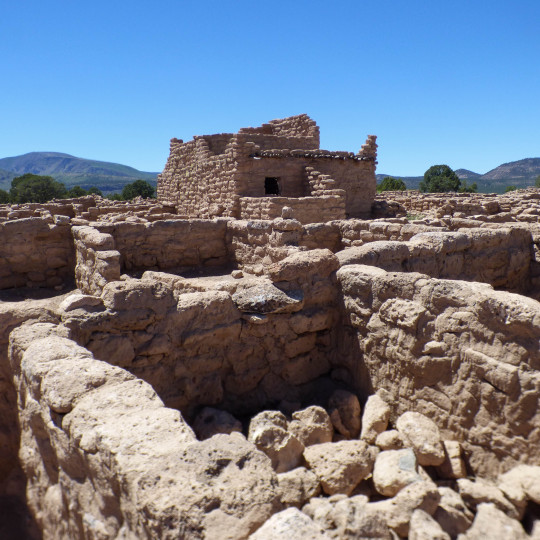

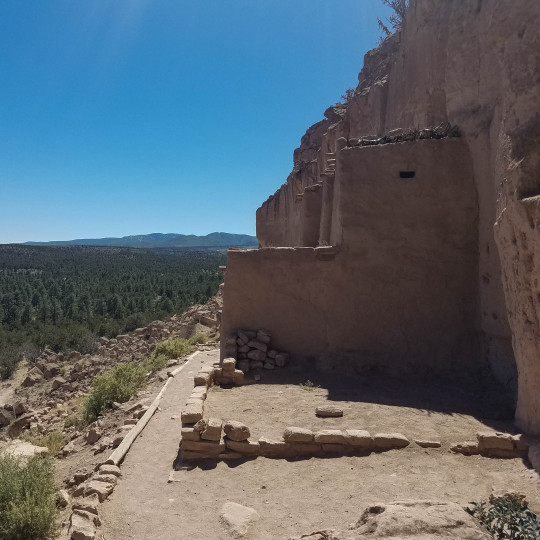
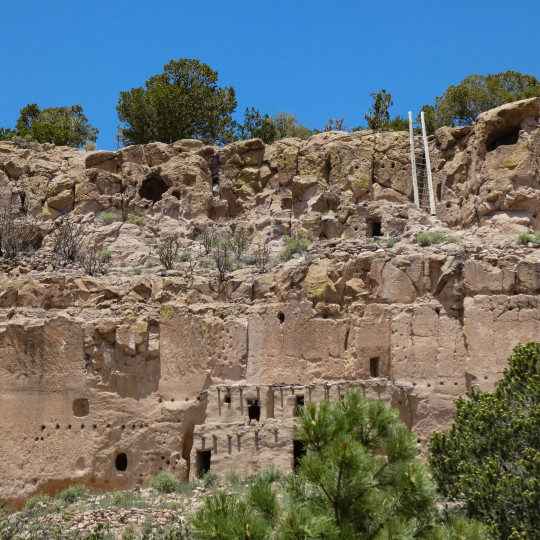
Puye was one of the ancestral villages of Santa Clara, San Ildefonso and Ohkay Owingeh Pueblos, occupied from about 900 AD to 1580 AD. The site was declared a National Historic Landmark in 1966. There are extensive ruins at the base of the cliffs and on top of the mesa, with outstanding examples of early Pueblo architecture and stunning panoramas of the Rio Grande valley. The sheer number of cliff dwellings at Puye, and how far they extend, is overwhelming, indicative of a large community.
#roadtrip#NativeAmerican#Puebloan#history#heritage#tradition#culture#daytrip#virtualtravel#NewMexico#historygeek#offthebeatentrack#leavenotrace#joltyourjourney#earthshotz#rockart#petroglyphs#indigenous#archaeology#anthropology#originalcontent#photography
488 notes
·
View notes
Text

Cultura: Huasteca
Técnica: Modelado
Provenience unknown, possibly looted
MNA
#archaeology#arqueologia#mesoamerica#art#arte#history#historia#native american#first nations#indigenous
85 notes
·
View notes
Text
Time Travel Question 52: Medievalish and Earlier
These Questions are the result of suggestions a the previous iteration. This category may include suggestions made too late to fall into the correct earlier time grouping. In some cases a culture lasted a really long time and I grouped them by whether it was likely the later or earlier grouping made the most sense with the information I had.
Please add new suggestions below if you have them for future consideration. All cultures and time periods welcome.
We already did the burnings which lost their bracket, but the culture lasted a long time across a big area, and people keep suggesting it.
#Time Travel#Passenger Pigeons#Extinct Species#Birds#North American History#Natural History#Pleistocene#Aotearoa#Moa#Haast's Eagle#Indigenous History#Māori History#Māori Folklore#Māori#Silphium#Ancient World#Neolithic#Cucuteni–Trypillia Culture#Kazakhstan#Archaeology#Bronze Age#History of Disease#Fiber Art#neanderthal#homins#Early humans#History of Fashion
272 notes
·
View notes
Text
Lost cities of the Amazon: how science is revealing ancient garden towns hidden in the rainforest
Archaeologists using 3D mapping are uncovering the remains of thousands of green metropolises with composted gardens, fisheries, and forests groomed into orchards

For decades, archaeologists have believed that human occupation of the Amazon basin was far older, vaster and more urbanised than the textbooks suggested. But hard evidence was scant, artefacts were scattered, and there were too few people on the ground to fully assess the magnitude of what lay cached in the dense forest. Then they found a shortcut – lidar.
Lidar (light detection and ranging) scans use pulses of light to create a 3D map of terrain in a fraction of the time it would take to survey from the ground. One of those making the most of the technology is a team of experts led by Vinícius Peripato, an analyst with the Brazilian National Institute for Space Research.
By combining lidar datasets, they are discovering traces of a lost world: evidence that between 10,000 and 24,000 pre-Columbian “earthworks” exist across the Amazon River basin.
While the remote scans still need to be verified on-site, Peripato says the findings so far make a compelling case that ancestral Amazonians systematically built up large urban centres and engineered the habitat to their needs and appetites with composted gardens, fisheries, and forests groomed into orchards in complex, sustainably run systems – which could offer lessons for modern cities.
The discovery challenges historical ideas of a pristine jungle too harsh to sustain human occupation. “It’s really incredible. Our research ended up guiding the course of several others, and not just in archaeology,” says Peripato, who is also collaborating on another project, Mapping the Archaeological Pre-Columbian Heritage of South America.
Continue reading.
#brazil#science#indigenous rights#history#archaeology#amazon rainforest#good news#image description in alt#mod nise da silveira
58 notes
·
View notes
Text
Tally of bones, artifacts reveals 2000 years of population swings among Indigenous Americans
Tens of thousands of radiocarbon dates track different regions’ population history before European arrival
Radiocarbon dates from tens of thousands of bones, textiles, food scraps, and charcoal bits are shedding light on fluctuations in Indigenous population numbers across the Americas before the arrival of Europeans. Researchers report today in the Proceedings of the National Academy of Sciences that the population of North America reached its maximum around the year 1150 C.E., then fell at least 30% by 1500. Those numbers were beginning to rebound when European conquest wreaked massive upheaval upon Indigenous societies. “This study is incredibly innovative,” says Carlton Shield Chief Gover, an archaeologist at the University of Kansas and citizen of the Pawnee Nation. “It’s the first large-scale data set looking at population trends by subregion.”
[...]
Kelly and colleagues emphasize the data should not be misconstrued to justify pernicious colonialist mythologies that Indigenous Americans were “a dying race” when Europeans showed up. “This is not an excuse for [Christopher] Columbus and what happened after,” adds Shield Chief Gover, who did not participate in the study but reviewed early drafts of the paper. (He also studied under the lead author as a graduate student.) “These are separate issues, and one does not justify the other.” María Nieves Zedeño, an archaeologist at the University of Arizona who was not involved in the study, says the bird’s-eye, continental view doesn’t fully capture local dynamics of areas that bucked the trend. “During the time of apparent decline, there were regions across North America that actually witnessed population growth,” she says. People living on the northern plains, she points out, saw their populations grow between 1500 and 250 years ago thanks to expansion of grasslands and bison herds and the innovation of better bows, arrows, and landscape engineering to manipulate prey. Despite the population boom in some areas, “the continental trend of population decline prior to European arrival is undeniable,” she says. The new study also questions the inevitability of the conquest of the content. If Europeans had arrived a few centuries earlier and faced much larger Indigenous populations and well-organized tribal confederacies, the study authors conclude, “the history of North America might have been very different.”
3 February 2025
50 notes
·
View notes
Text
Four-Cornered Hats from Peru and Bolivia, c.600-800 CE: these colorful, finely-woven hats are at least 1,200 years old, and they were crafted from camelid fur

Above: four-cornered hats made by the Wari Empire of Peru (top) and the Tiwanaku culture of Bolivia (bottom) during the 7th-9th centuries CE
Often referred to as "four-cornered hats," caps of this style were widely produced by the ancient Wari and Tiwanaku cultures, located in what is now Peru, Bolivia, and Chile.
According to the Metropolitan Museum of Art:
Finely woven, brightly colored hats, customarily featuring a square crown, four sides, and four pointed tips, are most frequently associated with two ancient cultures of the Andes: the Wari and the Tiwanaku. The Wari Empire dominated the south-central highlands and the west coastal regions of what is now Peru from 500–1000 A.D. The Tiwanaku occupied the altiplano (high plain) directly south of Wari-populated areas around the same time, including territory now part of the modern country of Bolivia.
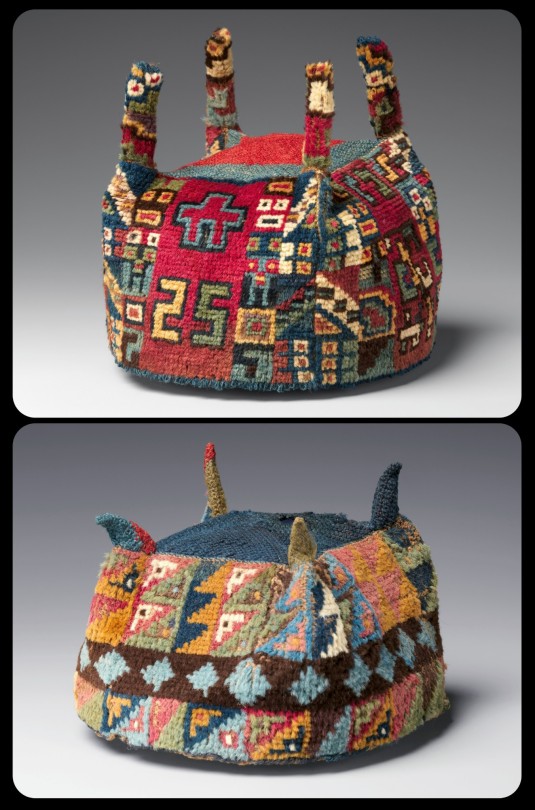
Above: pair of four-cornered hats made by the Wari people of Peru, c.600-900 CE
Both cultures used the hair of local camelids (i.e. llamas, alpacas, or vicuñas) to produce their hats. The hair was harvested, crafted into yarn, and treated with colorful dyes, and the finished yarn was then woven and/or knotted into caps and other textiles. Four-cornered hats from both cultures were often decorated with similar stylistic elements, including geometric patterns (particularly diamonds, crosses, and stepped triangles) and depictions of zoomorphic figures such as birds, lizards, and llamas with wings.

Above: four-cornered hats made by the Tiwanaku people of Bolivia, c.600-900 CE
The two cultures used different techniques to construct/assemble their hats, however:
Although they shared certain technological traditions, such as complex tapestry weaving and knotting techniques, the Wari and the Tiwanaku utilized significantly different construction methods to create four-cornered hats. Wari artists typically fashioned the top and corner peaks as separate parts and later assembled them together. Tiwanaku artists generally knotted from the top down, starting with the top and four peaks, to create a single piece.
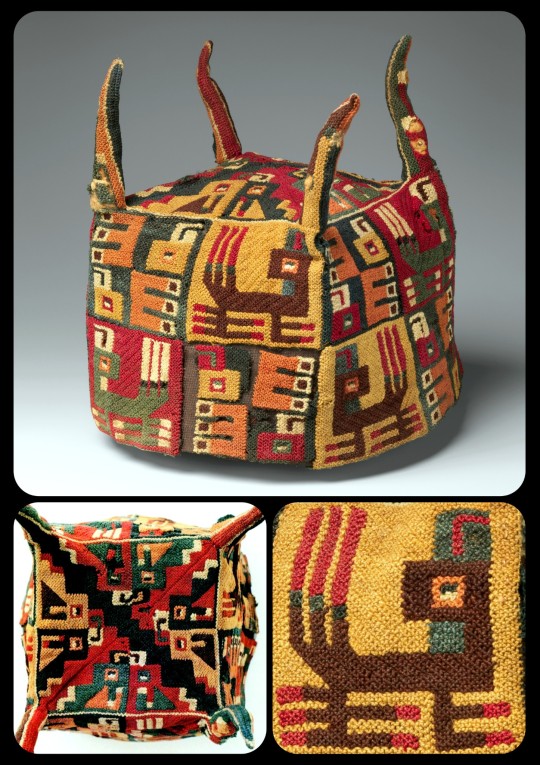
Above: a four-cornered hat from Bolivia or Peru, made by either the Tiwanaku or Wari culture, c.500-900 CE
There is evidence to suggest that four-cornered hats were often worn as part of daily life, as this publication explains:
Many have indelible marks of hard usage: wear along the edges and folds, a crusting of hair oil on the inside, remnants of broken chin ties, and ancient mends.

Above: a pair of hats made by the Wari culture of Peru, c.600-800 CE

Above: more hats from the Wari culture of Peru, c.700-900 CE, with colorful tassels decorating the four peaks of each cap
The oldest known/surviving examples of the Andean four-cornered hat date back to nearly 1,700 years ago. They began to appear along the northern coast of Chile at some point during the 4th century CE; these early hats had an elongated design with four short peaks, and they are typically associated with the Tiwanaku culture.
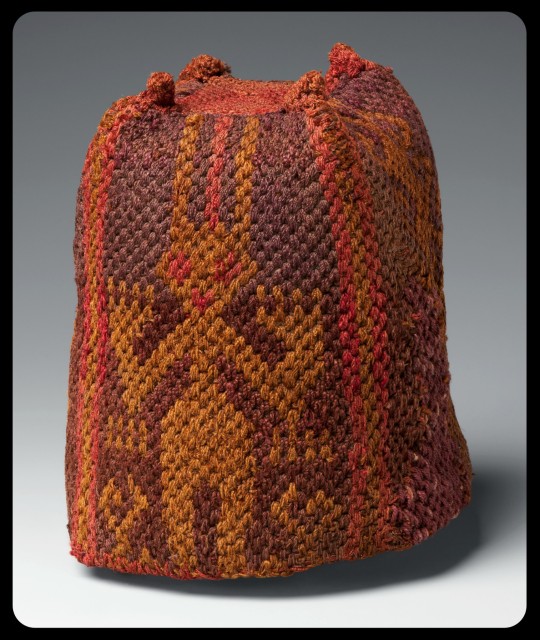
Above: this early example of a four-cornered hat was created by the Tiwanaku culture between 300-700 CE
Why indigenous artifacts should be returned to indigenous cultures.
Sources & More Info:
Metropolitan Museum of Art: Four-Cornered Hats 1, 2, 3, 4, 5, 6, 7, 8, 9, 10, 11, and 12
Museum Publication: Andean Four-Cornered Hats (PDF available here)
Emory University: Four-Cornered Pile Hat
Metropolitan Museum of Art: Andean Textiles
#archaeology#artifact#anthropology#history#four-cornered hat#tiwanaku#wari#art#textile art#hats#peru#bolivia#precolumbian#andes#alpaca#fiber art#crafting#pile hats#ancient textiles#indigenous art
180 notes
·
View notes